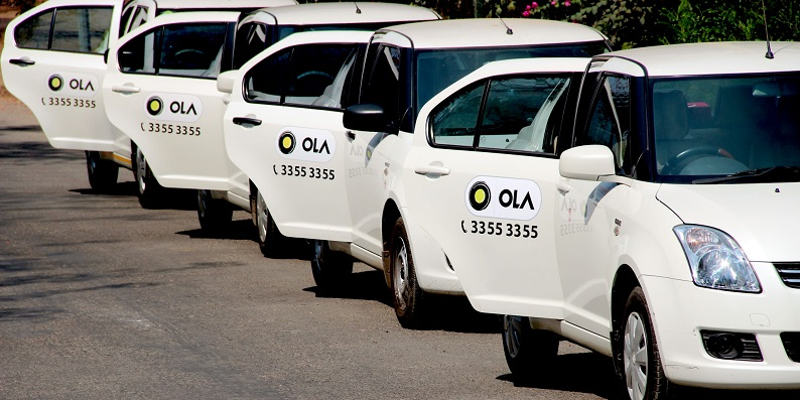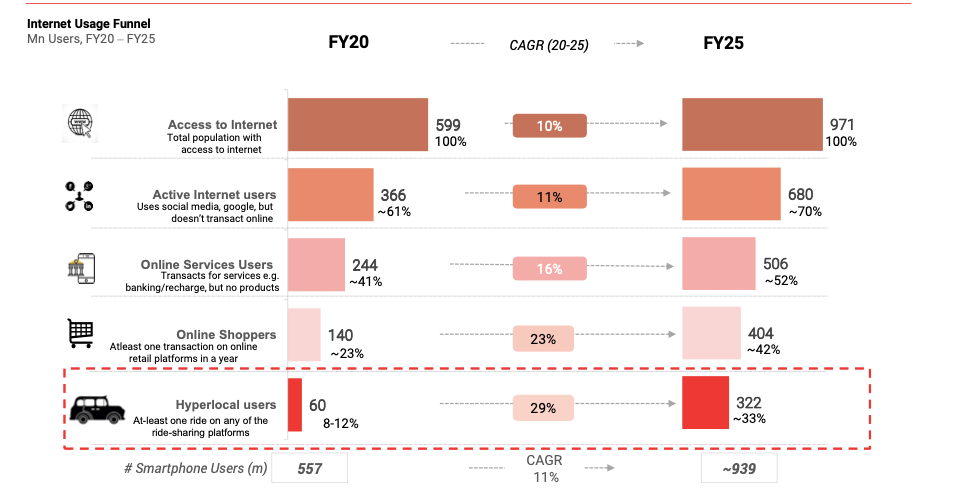Last week, the Union Ministry of Road Transport and Highways had issued fresh guidelines for cab aggregators like Ola and Uber, where it has capped the commission charges of these operators to 20 percent of the total fare. It has also put the cap on the surge pricing to 1.5 times of the base fare.
The regulations also stated that the driver of a vehicle integrated with the aggregator shall receive at least 80 percent of the fare applicable on each ride and the remaining charges shall be received by the aggregator.
The guidelines have been issued at a time when the coronavirus pandemic has had a major impact on the transportation and mobility segment. According to a McKinsey report, the traditional automotive sector is likely to produce 7.5 million fewer vehicles in 2020 – an impact being attributed to the pandemic.

What about earnings?
What do these guidelines mean for mobility companies? These guidelines primarily impact Ola and Uber. Ujjwal Chaudhry, Associate Partner, Consumer Internet at consulting firm RedSeer believes that the guidelines shared will have a mixed impact. He explained that besides taking a step towards formalising the cab aggregator sector, the move also increases consumer trust on the safety norms provided (option for women to book shared rides with other women passengers only, installation of panic buttons, fire extinguisher, manual override etc).
However, the guidelines can also prove to be a disadvantage for the drivers. “Capping surge and platform fee will ultimately lead to reduced earnings for 5 lakh drivers (currently on these platforms) and will also lead to increased prices and higher wait times for the six to eight crore consumers who use it for their mobility and commute needs,” Ujjwal says.
Echoing his thoughts, a cab driver who is active on both platforms says - “For several months now, the number of cab rides have dropped. This meant already lower earnings per ride for us. Now with these new guidelines, it would mean further drop in our source of income.”

Image and Data credit: RedSeer
The Covid-19 impact
There has been a whopping 70 to 90 percent drop in the number of riders across major cities in the world. The report also mentioned that most ride hailing companies saw a decline in usage by 70 percent. Clearly, last-mile connectivity and mobility have been impacted.
A RedSeer report states - The Mobility market has seen a very gradual recovery since COVID-19 broke out as consumers are still not travelling as much using public transport. Nearly 600 million users have access to the internet out of which 8-12 percent users are Hyperlocal users; of these atleast one user rides on any of the ride sharing platforms.
The new guidelines also touched upon the need for passenger data to be stored in a server in India for a minimum of three months and maximum of 24 months from the date of when the information was generated.
Cab aggregators in the country have seen run-ins with the government. Last year, they were banned for six months in Karnataka, however, after several rounds of talks and discussions, the government relented.
Not black and white
Since January last year, there has been unrest regarding fare share, and cab operators were finding it increasingly difficult to make money on the share platforms. Industry estimates state that a driver makes close to 74 percent of the ride fare, after taxes. These new guidelines have now raised this to 80 percent.
“The amount the cab drivers make is not that simple as a bracket or a small norm. It is on the number of rides, how long the rides were, are they new in the system or have been around for a while. The capping is all basis how the rides run, and driven by algorithms. The fight is not that simple. Also, the pandemic has seen a drop in the number of rides, but cab aggregators have been working around the amount the drivers make. So, these percentages don’t work for an aggregator like platform,” says an analyst in the sector on condition of anonymity.
While cab rides are dropping, the number of auto rides and two-wheelers are significantly increasing. Earlier, Rapido and Dunzo, which offers bike-hailing options in a few cities, saw that people using bike-hailing services were early office goers, or college students.
Now, essential services workers like bank employees, hospital workers, and pharma sales representatives are opening up to the idea of using the platform. The two-wheeler ride option, operated by Ola, Uber, Rapido, and Dunzo across India, has different norms in different states.
In some states like Maharashtra and Karnataka these are still illegal, while in others like Rajasthan, Hyderabad etc these are operational.
Public transport in India is unlike other countries’ transport systems. For instance, there are only 6,000 buses for over a million commuters in Bengaluru, making the vehicles overcrowded and public dependency on it high. New guidelines need to be uniform and streamlined so as to make public transport a pleasure.
Edited by Anju Narayanan
Link : https://yourstory.com/2020/12/new-transportation-guidelines-impact-ola-uber
Author :- Sindhu Kashyaap ( )
December 02, 2020 at 06:30AM
YourStory


